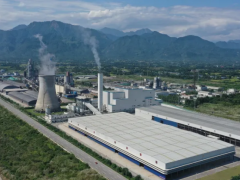美国石油巨头将在2023年大幅增加资本支出
更高的现金流和积极的盈利前景为企业主管们增加资本支出预算提供了更多空间
在2020年石油危机之后,大多数能源公司都避免投入巨资扩大油气生产
据油价网12月8日报道,几个月前,美国政府曾敦促能源公司停止“战争暴利”,甚至威胁说,如果能源公司不能将利润用于降低美国人的能源成本和提高油气产量,就会对他们征收暴利税。这些呼吁发出之际,大宗商品和能源价格高企,石油巨头的利润创下新高。
在2020年石油危机之后,大多数能源公司都避免投入巨资扩大油气生产,而是优先考虑以股息和股票回购的形式向股东们返还更多现金。但有迹象表明,即使众多能源公司宣布了重大支出和资本支出的增加,能源公司也愿意在未来几年投入更多资金。
美国石油巨头雪佛龙公司周三宣布,2023财年资本支出预算将达到170亿美元,处于其150亿至170亿美元中期区间的高端,比今年的预期支出高出25%以上。
雪佛龙公司表示,上游资本支出包括用于二叠纪盆地开发的40多亿美元;约20亿美元用于其他页岩和致密资产,约20亿美元用于降低碳排放或提高可再生燃料产能的项目,比今年的预算增加了一倍多。尽管雪佛龙公司2023年的支出将大大高于2020年-2021年疫情流行年份的资本支出,但仍远低于2012年-2019年期间300亿美元的年均水平。
雪佛龙公司董事长兼首席执行官表示:“尽管存在通货膨胀,但我们的资本支出预算仍与之前的指导相符。”
雪佛龙公司的同行埃克森美孚公司尚未宣布大幅增加资本支出,但周三表示,其2023年的资本支出将更接近其年度目标200亿至250亿美元的上限,预计到2027年将保持这一水平。埃克森美孚公司表示,其超过70%的资本投资将部署在美国二叠纪盆地、圭亚那、巴西和全球各地的液化天然气项目。
这些投资将有助于到2027年将埃克森美孚公司的上游日产量增加50万桶油当量,达到420万桶油当量。埃克森美孚公司还公布了到2027年前将低排放项目的支出提高15%至170亿美元的计划。埃克森美孚公司还计划在2024年之前将股票回购计划扩大到500亿美元,其中包括今年的150亿美元。那么,这些钱从哪里来呢? 埃克森美孚公司表示,预计到2027年前,该公司的“盈利和现金流潜力将比2019年翻一番”,并预计到2023年底前,在2019年的水平上节省90亿美元的结构性成本。
12月6日,加拿大第三大原油和天然气生产商塞诺佛斯能源公司表示,预计在2023财年将支出40亿至45亿加元,高于今年33亿至37亿加元的预期,其中包括28亿加元用于维持基础生产和支持业务的维持资本。塞诺佛斯能源公司表示,预计将投资12亿至17亿加元用于优化和增长,包括在加拿大大西洋地区建设West White Rose项目 。
塞诺佛斯能源公司还预测明年油气日产量为80万至84万桶油当量,同比增长超过3%,其中油砂日产量为58.2万至64.2万桶,常规日产量为12.5万至14万桶。与此同时,该公司预计下游原油日总产量将达到61万至66万桶,同比增长近28%。
上周,巴西石油和天然气巨头巴西国家石油公司(Petrobras)宣布,将在2023-2027年增加大约15%的投资,达到780亿美元,超过该公司2022-2026年的预计支出。在计划的780亿美元资本支出中,83%(640亿美元)用于勘探开发活动,67%的勘探开发资本支出预算将用于盐下油气勘探和开发活动。该公司还计划将减少碳排放的支出从之前计划的4%提高到大约6%,并将其脱碳基金从目前的2.48亿美元增加一倍多。
与此同时,巴西矿业巨头淡水河谷公司12月7日宣布,计划将明年的资本支出从今年的55亿美元增加到60亿美元,而勘探费用将从今年的1.8亿美元增加到2026年的3.5亿美元。淡水河谷公司还表示,预计2023年铁矿石产量将小幅增加至3.2亿吨,而今年为3.1亿吨,但预计到2030年铁矿石产量将超过3.6亿吨。与此同时,铜产量预计将从今年的约26万吨跃升至2023年的33万至37万吨,而镍产量预计将从今年的大约18万吨跃升至30万吨。
李峻 编译自 油价网
原文如下:
Big Oil Is Preparing To Spend A Lot More In 2023
· U.S. oil majors are significantly increasing capex in 2023.
· Higher cash flow and a positive earnings outlook give executives more space to increase capex budgets.
· The majority of energy companies have avoided spending big to expand production in the aftermath of the 2020 oil crisis.
A couple of months ago, U.S. urged energy companies to stop ‘war profiteering’ and even threatened to slap them with windfall tax if they failed to invest their profits in lowering costs for Americans and increasing production. The calls came at a time when Big Oil has been posting record profits amid high commodity and energy prices.
The majority of energy companies have avoided spending big to expand production in the aftermath of the 2020 oil crisis, prioritizing returning more cash to shareholders in the form of dividends and share buybacks. Well, but there are signs that companies are willing to spend more in the coming year(s) even as a raft of energy companies have announced major spending and capex hikes.
U.S. oil supermajor Chevron Corp. (NYSE: CVX) announced on Wednesday that FY 2023 capital spending budget will clock in at $17B, at the top end of its $15B-$17B medium-term range and up more than 25% from expected spending in 2022.
The company said that upstream capex includes more than $4B for Permian Basin development; $2B for other shale and tight assets and $2B to go into projects that lower carbon emissions or increase renewable fuels production capacity, more than double the 2022 budget. Although Chevron’s spending for 2023 will be considerably higher than capital spending in the 2020-21 pandemic years, it’s still much lower than the $30B annual average of the 2012-19 period.
"Our capex budgets remain in line with prior guidance despite inflation," Chairman and CEO Mike Wirth said.
Chevron’s peer ExxonMobil Corp. (NYSE: XOM) has not announced a drastic increase in spending, but on Wednesday said that its capital spending for 2023 will be closer to the top end of its annual target of $20B-$25B, a level it expects to maintain through 2027. The company said more than 70% of its capital investments will be deployed in the U.S. Permian Basin, Guyana, Brazil and LNG projects across the globe.
These investments will help increase the company's upstream production by 500K boe/day to 4.2M boe/day by 2027. Exxon also unveiled plans to boost spending on lower emission projects by 15% through 2027 to $17B through 2027. Exxon also plans to expand its stock buyback plan to $50B through 2024, including $15B this year. So, where will all that money come from? Exxon says it expects to "double earnings and cash flow potential" by 2027 compared to 2019, and also expects to deliver ~$9B in structural cost savings by year-end 2023 from 2019 levels.
On Tuesday, Canada's third-largest crude oil and natural gas producer Cenovus Energy (NYSE: CVE) said it expects to spend C$4B-C$4.5B in FY 2023, higher than estimates of C$3.3B-C$3.7B for 2022, including C$2.8B of sustaining capital for maintaining base production and support operations. Cenovus said it expects to direct C$1.2B-C$1.7B towards optimization and growth, including the construction of the West White Rose project in Atlantic Canada
Cenovus (CVE) also guided for production of 800K-840K boe/day next year, an increase of more than 3% Y/Y, including oil sands production of 582K-642K boe/day and conventional output of 125K-140K boe/day. Meanwhile, the company expects total downstream crude throughput to clock in at 610K-660K bbl/day, up nearly 28% Y/Y.
Last week, Brazil’s oil and gas supermajor Petróleo Brasileiro S.A. or Petrobras (NYSE: PBR) announced that it will increase 2023-2027 investments by about 15% to $78 billion over the company’s 2022-2026 projected spending. Of the $78 billion planned for capex, 83% or $64 billion is earmarked for E&P activities while 67% of the E&P capex budget will go to pre-salt activities. The company also plans to boost spending to reduce carbon emissions to ~6% of the total compared with 4% in the previous plan, and will see its decarbonization fund more than double the current $248M.
Meanwhile, Brazilian mining giant Vale S.A. (NYSE: VALE) On Wednesday announced plans to increase capex to US$6bn next year from US$5.5bn this year while exploration expenses will reach US$350mn in 2026 compared to $180 million for 2022. Vale also said it expects iron production to only increase slightly to 320 million tonnes in 2023 compared to 310 million tonnes in the current year, but expects production to exceed 360 million tonnes by 2030. Meanwhile, copper production is expected to jump to 335K-370K tons in 2023 from 260K tons this year while nickel production is expected to exceed 300K tonnes from ~180K tons in 2022.
免责声明:本网转载自其它媒体的文章及图片,目的在于弘扬石化精神,传递更多石化信息,宣传国家石化产业政策,展示国家石化产业形象,参与国际石化产业舆论竞争,提高国际石化产业话语权,并不代表本网赞同其观点和对其真实性负责,在此我们谨向原作者和原媒体致以崇高敬意。如果您认为本站文章及图片侵犯了您的版权,请与我们联系,我们将第一时间删除。







